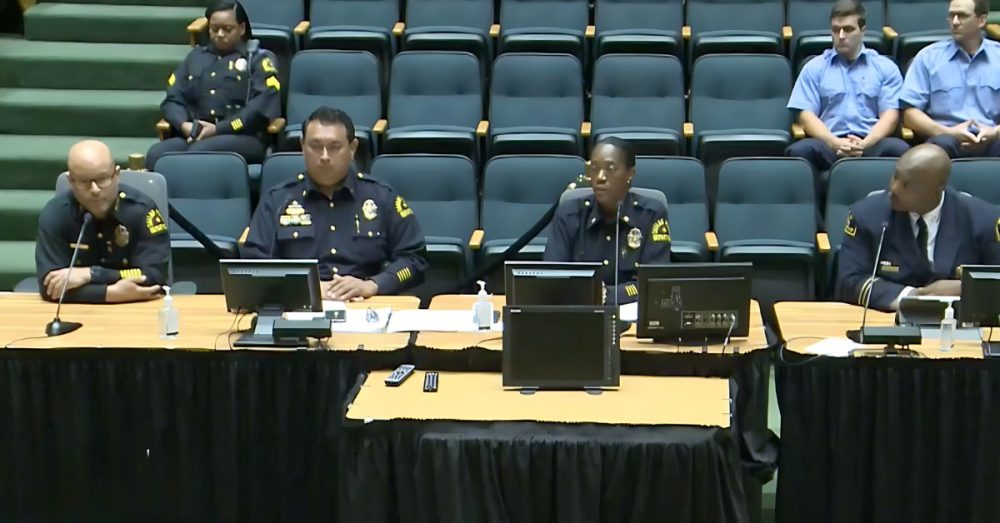The Dallas Police Department highlighted a significant drop in violent crime over the past year during a presentation to the City of Dallas Public Safety Committee on Tuesday.
Overall violent crime during the first seven months of 2024 has dropped 13.3% compared to the same period last year, continuing a downward trend that began in January 2021, when DPD first introduced its Violent Crime Reduction Plan. “Violent crime” includes criminal homicides, aggravated assaults, sexual assaults, and robberies.
Homicides dropped 21.3%, aggravated assaults dropped 18%, and robberies are down 3.9%. When parsing the robbery data, individual robberies are down 9.4%, but business robberies have increased by 20.9%. The department said that more than a third of these business robberies were shoplifting incidents that escalated to robberies.
As of August 27, incidents of fondling are down 18.8%, rape has dropped 39.4%, and reports of forcible sodomy went down 31.3%, but the category of sexual assault with an object rose by 58%, according to data from the City of Dallas Crime Analytics dashboard.
While the police department’s focus on violent crime appears to be yielding positive results, some categories of non-violent crime have shown increases. Simple assaults are up slightly at 0.6%, drug and narcotic violations are up 8%, and shoplifting has jumped 14%. Instances of kidnapping are up 12.1%, and identity theft is up 13.4%.
Dallas has long been a hotbed of activity for car thieves, as previously reported by The Dallas Express. So far this year, however, motor vehicle thefts are trending downward, dropping 15.2%. However, there is still much work ahead for the DPD in this area, as the City has recorded nearly 10,000 motor vehicle thefts so far this year.
In addition, while vehicle break-ins have decreased by 18.4%, they are still high, with more than 7,000 incidents reported this year.
DPD’s Violent Crime Reduction Plan focuses on increasing police visibility in high-crime micro-locations within the city based on crime analysis and mapping. The department also routinely provides “Crime Prevention Through Environmental Design” assessments, highlighting areas where measures such as trimming back hedges, improving lighting, and adding security gates would be beneficial.
The department’s presentation noted that 43% of streetlights in high-risk areas have converted to brighter LED lights, and during the past seven months, nighttime violent crime has dropped 28.1%.
Police Chief Eddie Garcia praised his officers for the department’s success in reducing violent crime in the city.
He added, “If there’s a top-10 major city that’s had a four-year [crime-reduction] trend, I’d like to see that.”
Despite the gains made, DPD is still currently short about 1,000 officers, according to a prior City analysis, and is working with a budget that is far smaller than that of other high-crime municipalities, such as Los Angeles, Chicago, and New York.


